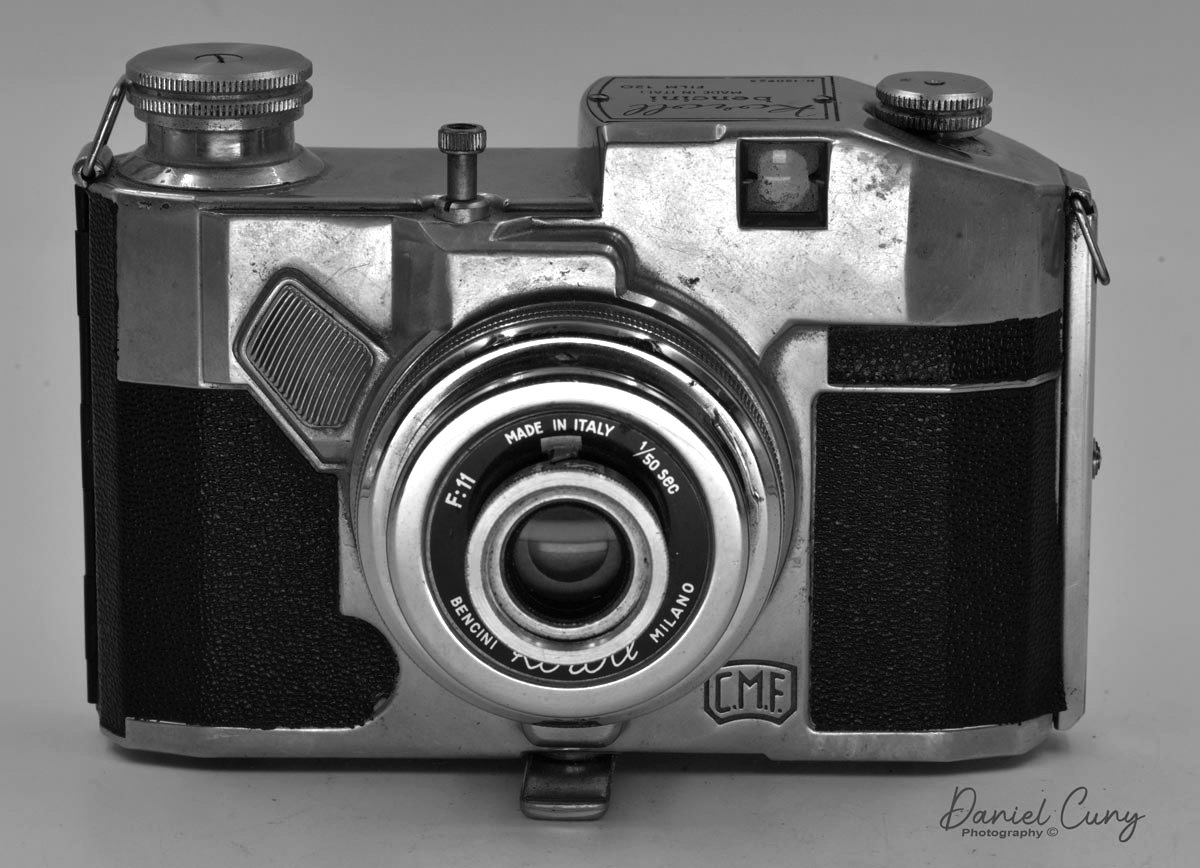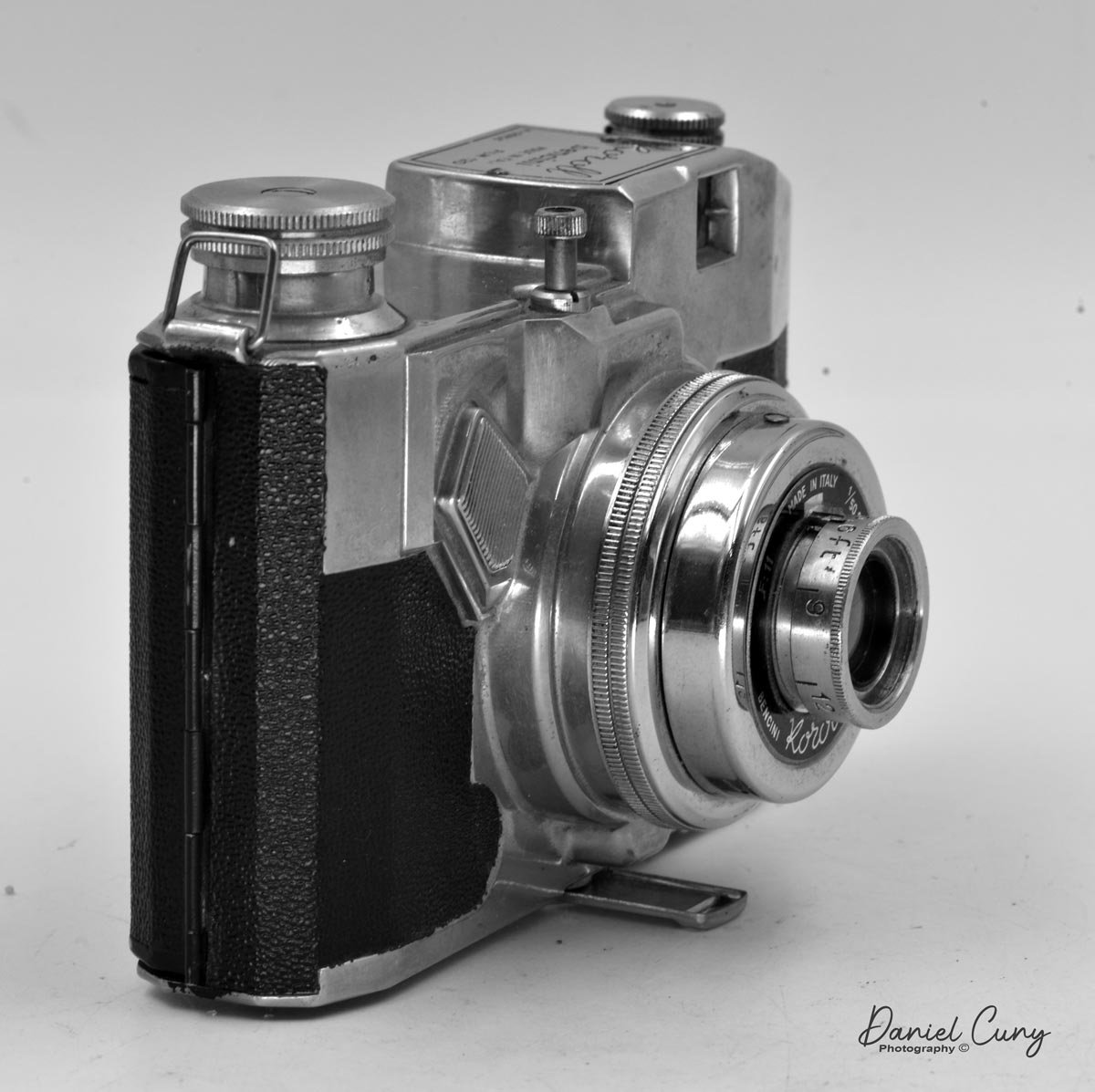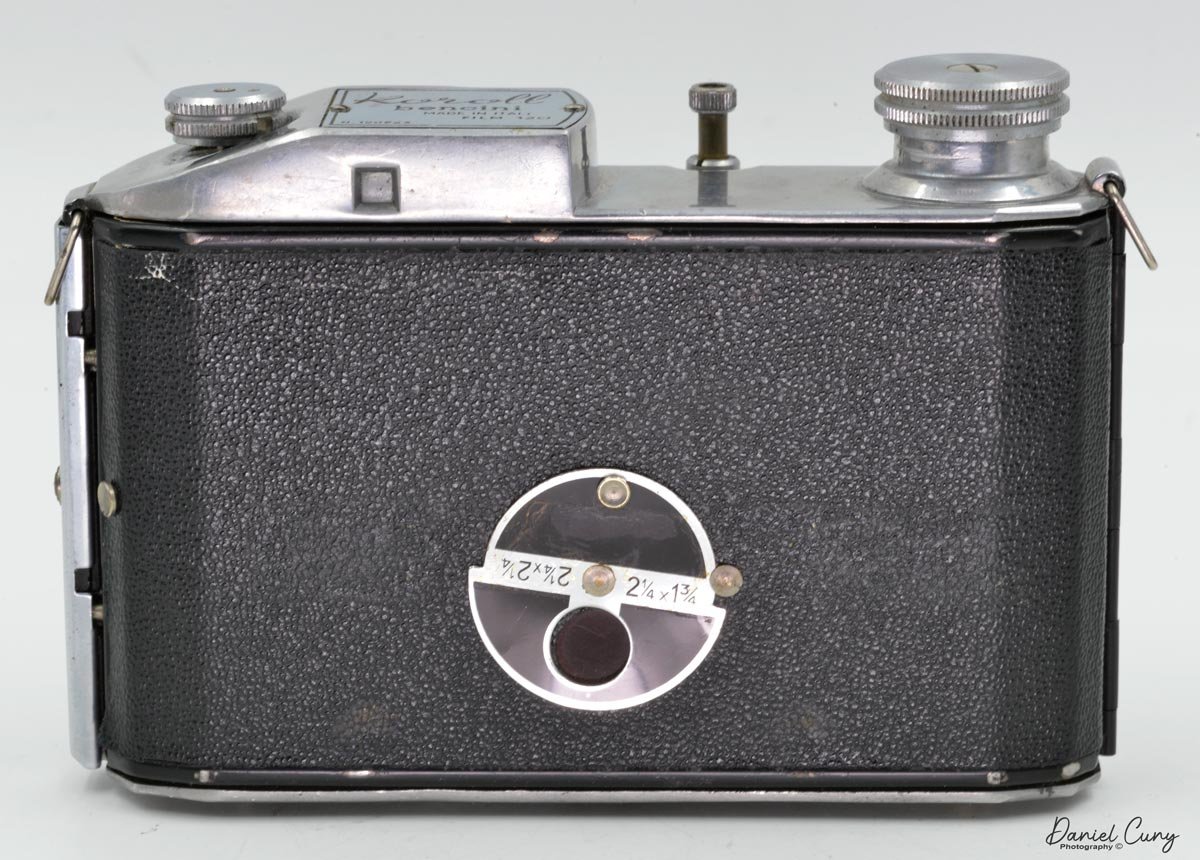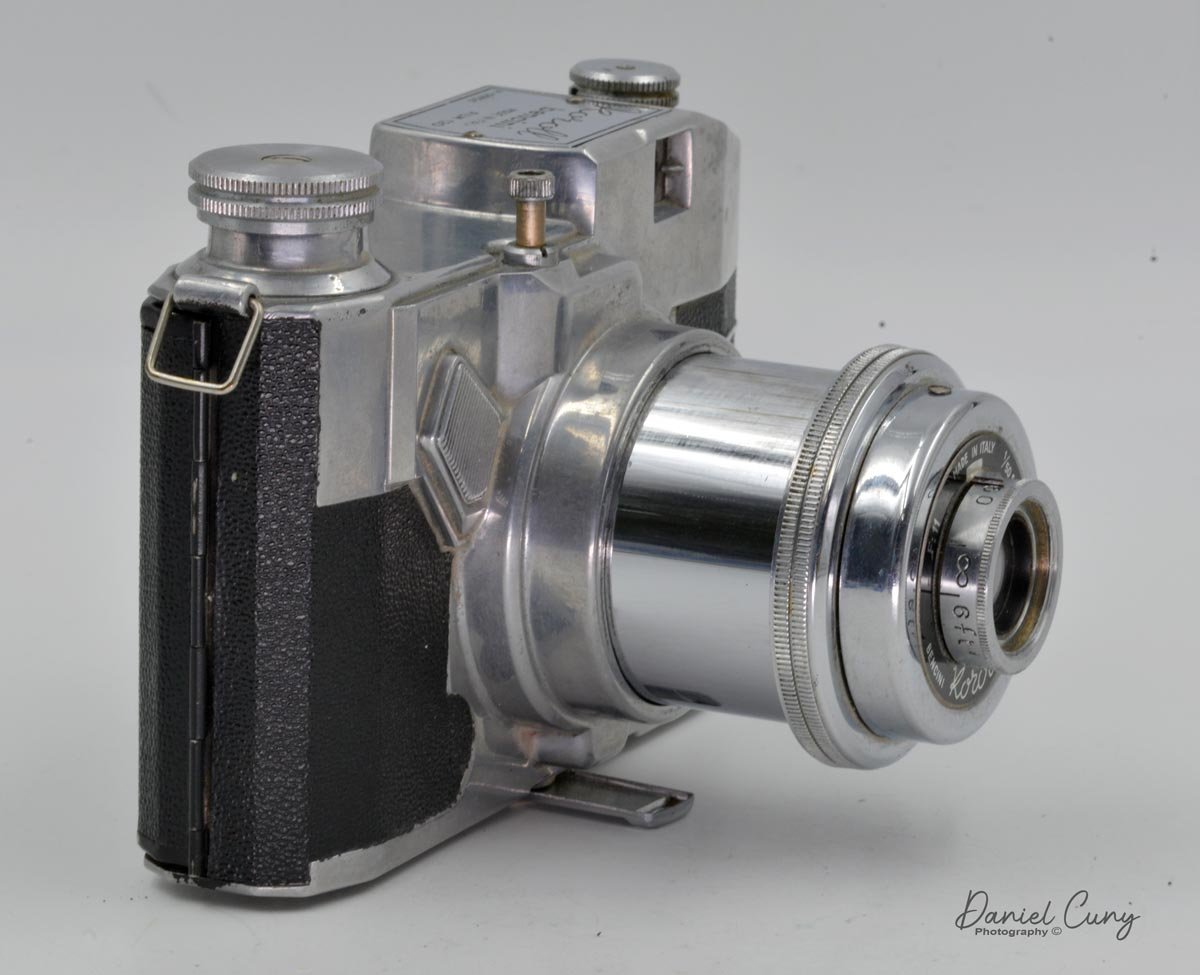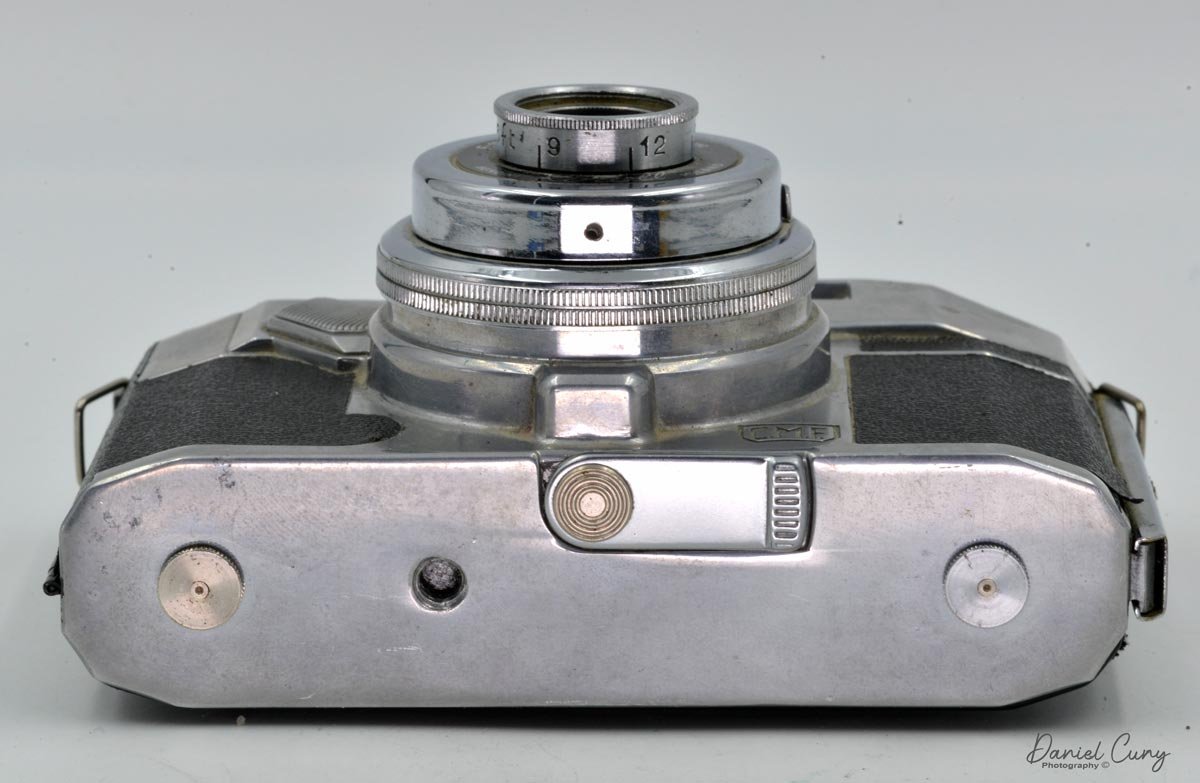Bencini Koroll
Front view of Bencini Koroll Camera
The interesting thing that caught my eye about this camera was the aluminum body. I had previously seen these in books and thought I'd jump on it if the right opportunity presented itself to get one at a reasonable price. With that said, I want to tell you about an exciting camera from Italy, the Bencini Koroll, a 645 format 120 camera.
History
Antonio Bencini started his photographic career fixing and maintaining french made cameras during WWI. In school, he was trained to be an aeronautical engineer. After the war, he and a partner started FIAMMA, a successful camera company making box cameras. In 1935, the oldest film company in Italy, Farrinia, purchased FIAMMA. Bencini moved to Turin and started Filma, a company focusing on simple 127 film size box cameras. Two years after he began Filma, Farrinia purchased the company, prompting Bencini to move to Milan, where he started ICAF (ICAF). Having a war in Europe was pretty evident given the circumstances in Germany. In his factory, camera production was halted during WWII so the company could manufacture aviation and bicycle parts.
Top View of Bencini Koroll Camera
After the war, in 1946, the company changed its name to CMF. During this time, cloth bellows in cameras weren't used. Bencini decided to transition to a sliding tube system of bellows with a focusable lens mounted on the end of the lens. Most of the Bencini cameras were either the sliding tube bellows or just a rigid lens system, gaining popularity during this time. Bencini cameras were popular throughout the1960 with their ever-popular "Comet and Koroll" lines of cameras. Still, the camera company lost favor in 1970 with the influx of Japanese cameras, and by the 1980s, the camera company had ceased production.
My Camera:
Having purchased my Bencini Koroll a while ago, it does have some cosmetic issues with scrapes and scratches. The shutter is accurate, and since there is no real aperture control, the setting of f11 is what I use when metering for exposure.
The camera measures 5.25" wide x 3.25" tall, 2.5" deep with the lens retracted, and 3.75" deep with the lens extended. My camera weighs one lb. and 1.2 oz without film loaded into the camera and without the strap. The Koroll is considered lightweight for a camera this size, and I attribute this to the fact it's an aluminum cast body lighter than other metals.
The camera loads just like any 120 camera, although getting the reels in and out is a bit difficult due to the tight spacing of the film chamber.
To take a photo, you need to pull the lens out from the camera, and you also need to rotate it to lock it into the taking position, which is similar to the Rollei 35 cameras. The shutter will not fire until the lens is out or pulled away from the body, which also engages the shutter button. The shutter won't fire if it's in the retracted or closed position, which is very nice for traveling or hiking. You won't accidentally fire the shutter with the lens retracted, causing double exposures or lost frames.
The one unique feature I like about this camera is the pull-out "foot," which stabilizes the camera when you put it on a table or flat surface. Using the foot is especially helpful when the lens is pulled out and in the "taking position."
The focus on the end of the lens is a straightforward "guestimate" focus system. There is no integrated rangefinder for critical focusing. If you're using f11 all the time for taking your photos, the focus isn't that critical since it's using a broad depth of field. Nothing is printed regarding the lens's focal length, but assume it's in the standard 75 to 80mm range.
Looking through the viewfinder was very challenging, especially for the people (like myself) that wear glasses. The rear part of the viewfinder is tiny and difficult to look through. Often when I used it, I just pointed the camera at my subject, and for the most part, I got the images I was expecting.
The day I was shooting with this camera was an overcast and foggy day at the coast. I did get some favorable images which you can see here.
Images from Camera
Video:
I’m starting to put a video review of the camera I post here on my channel on Youtube. To view the video, you can find it here:Bencini Koroll
Conclusion:
The Bencini Koroll camera was surprisingly fun to use and straightforward, and I took some fun and exciting images. That's something I look for in a camera. I can see myself packing this on a trip to foreign lands to photograph the streets of Bangcock, Paris, or even just walking around the neighborhood. The camera isn't expensive and was something I'd recommend you pick up at the next flea market, boot sale, or camera meeting if you see it; you won't regret it.
Until next time, be safe and keep looking for the odd and unusual cameras you can add to your collection. I know I always do.
